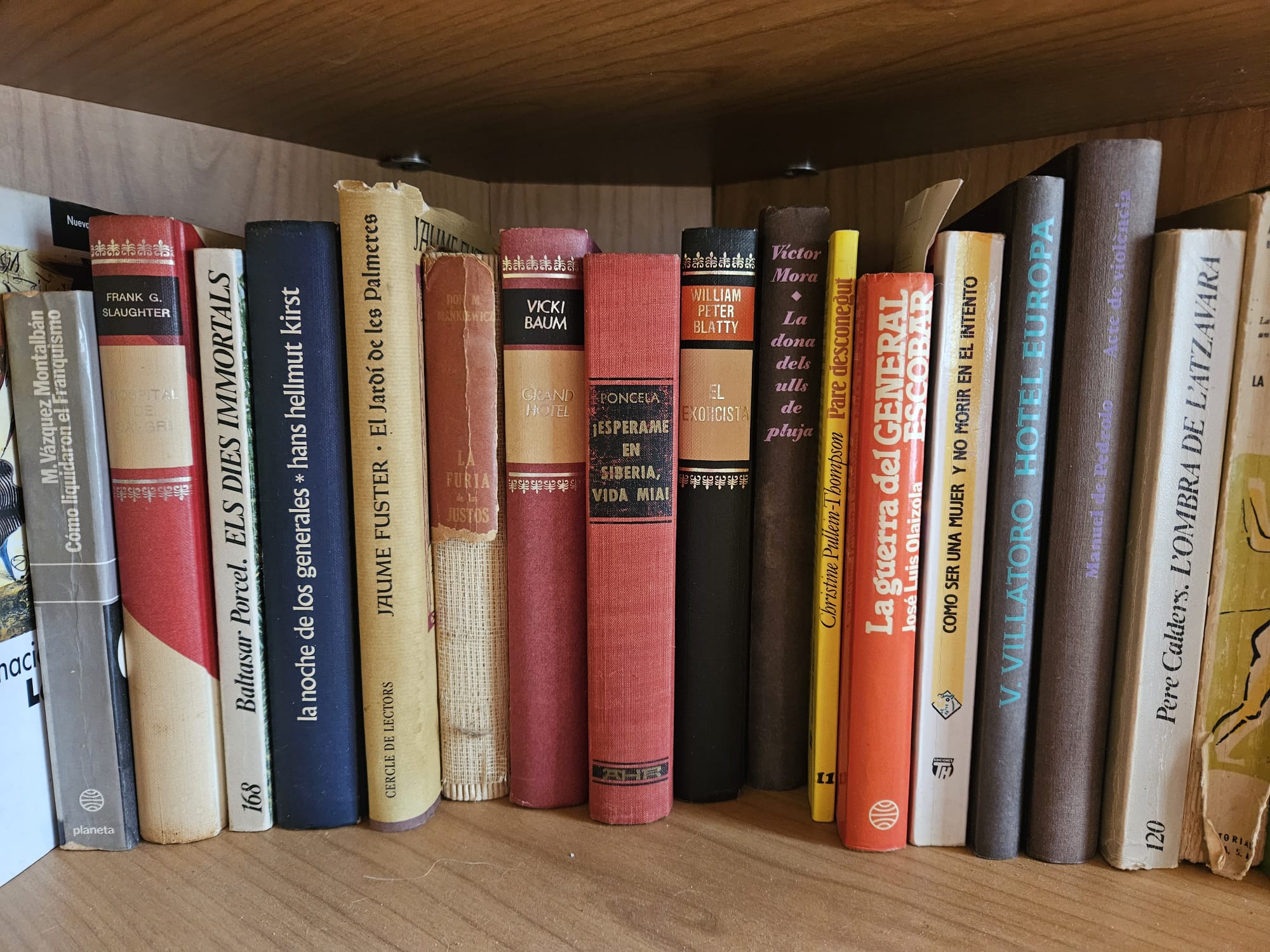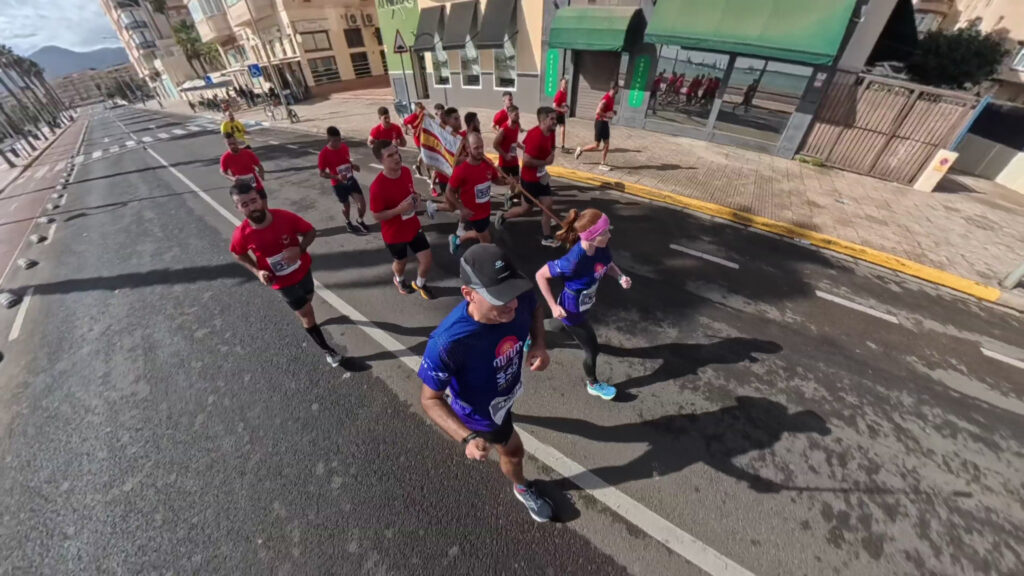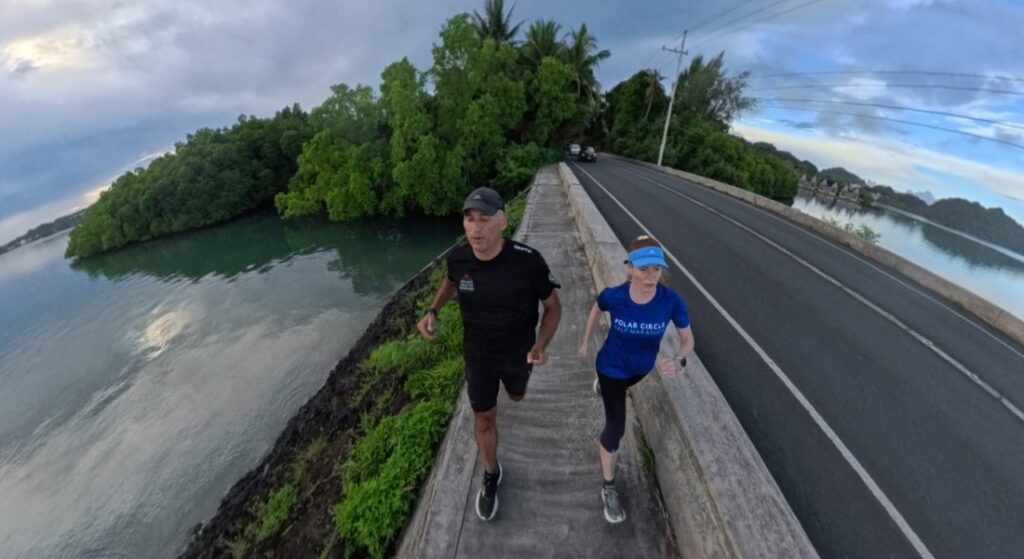Pura Tanah lot in Bali. July 2023.
In Bali, we ran at dawn along the impressive basalt cliffs home to Pura Tanah Lot: “the temple of the land in the sea”. The sun turned the sky pale pink, and our footsteps were echoed by the roaring of the waves.
TDLR; “too long, didn’t read”
- I just want to run! Take me to RUN.
- Running is my excuse for travelling. Take me to TRIP.
- Running is my excuse for eating. Take me to CARBOLOADING.
- I want to know what to read in the plane. Take me to ONE BOOK.
🌍 The Trip 📷: What to see in Bali
Not surprisingly, millions of tourists visit Bali, the “island of the Gods” each year. It is home to vivid green rice paddies on meandering terraces. And whimsical Hindu temples both perched on cliffs or reigning over mountains.
There are also cities and villages with a frenetic pace of life and crazy traffic. In there Balinese religiosity is very present, with offerings smoking incense in every corner, or thousands of domestic temples. In Bali, there are more temples than houses.

On the outskirts of Denpasar numerous statues lined the road like petrified guardians. There were Hindu deities, Balinese mythological beings with doe eyes and long tongues, gentle pot-bellied Buddhas, and modern figures—even a giant-sized garden gnome.
“A Bali Conspiracy Most Foul: Inspector Singh Investigates”, by Shamini Flint
The rice terraces in Ubud
We chose to visit the rice terraces in Tegalallang, near Ubud, through which you can walk for a kilometer. It is a beautiful setting, with green rice fields. They seem almost unreal, surrounded by palm trees, hibiscus, orchids and waterfalls. Although the tourist “add-ons” (swinging dressed with long robes or posing inside heart-shaped nests…) make it all less authentic, somehow.

The Gate of Heaven
As for temples, we also visited the Pura Lempuyang, famous for its “Gate of heaven“.
It is a magnificent temple, with three imposing dragon stairs and stunning views of Mount Agung. Even though the hundreds and hundreds of tourists queuing up for a local to take them a picture (with a mirror) gives the experience a sense of phoniness.
You are handed over a number when entering… and we got number 156 when it wasn’t even 7am! We ended up taking a picture downstairs instead. And watching the locals with offers in their way to workship their Gods.
The Tirta Gangga Water Palace
Near Pura Lempuyang we visited the beautiful Tirta Gangga water palace. The palace is owned by the former royal family, the Karangasem. It has fountains, pools and artificial lakes with huge koi fish (fish food is sold in all the souvenir shops). Really recommended.

There are many other magical places in Bali, that you can visit traveling with the preferred means of transport of the locals: motorcycles. In Bali you can get to see families of four, people carrying ornate doors or baskets overflowing with coconuts, riding easily in them.
🍜 Carboloading and Protein Recovery 🍝: What to eat
For carbo loading, we ate the famous Nasi Goreng. The dish is basically fried rice, so high on carbohydrates. It is cooked with various ingredients like eggs, vegetables, and often accompanied by chicken, shrimp or other proteins. If you want the noodle option, that’s Mie Goreng. While both dishes are delicious and relatively high in carbohydrates, Nasi Goreng tends to have more carbohydrates due to the higher carbohydrate content of rice compared to noodles.

🍗 For recovery, Bebek Betutu is a famous Balinese dish featuring spiced and roasted duck (or chicken, named Ayam Betutu), marinated with a blend of traditional spices, wrapped in banana leaves, and slow-cooked, resulting in a flavorful and protein-rich dish!
🏃♀️ The Run 🏃♂️
Pura Tanah Lot is a Hindu temple located in a rock formation whose access is at the mercy of the tides. Dedicated to the goddess of the sea, its name in Balinese literally means “temple of the land in the sea”. And as legend has it, the base of the rock is inhabited by thousands of protective snakes.

The route does not enter the temples themselves, you do not need to have your shoulders, arms or legs covered. However, it is very important to be respectful and act at all times according to the holy nature of the temples ❗
We went running at dawn, and without the hordes of tourists that visit during the day, we were able to enjoy the majesty of Tanah Lot and its surrounding spirited nature, in a different, more intimate way. We visited Batu Bolong, another iconic temple which is accessed by a natural rock bridge. In fact its name means “hollow rock”. And thus we also avoided the hours in which the sun is too strong.
We ran a “loop” of eight kilometers, so that we could meander through green fields and see more of the rugged Balinese coastline. Although a shorter route, of about four kilometers, already allows you to see the two temples and the basalt cliffs with its characteristic dark color and loads of lush vegetation overflowing above.

“He got a little dizzy with the smell of so many clove cigarettes. This was the Bali he liked, not the placid, subservient facade, but those sudden displays of energy and passion that bubbled up through the cracks of society like the fizz of a geyser.
“A Bali Conspiracy Most Foul: Inspector Singh Investigates”, by Shamini Flint
Tanah Lot
As we left the hotel, we were greeted by the sound of a bamboo broom being swung by an efficient employee, and at the temple entrance we were greeted by the more powerful sound of a leaf blower. At six in the morning, the local employees were working hard to clean the entire facility. The shop-lined avenue, which during the day was a hive of activity, was empty. We were the only ones passing through the divided doors, or candi bentar, typical of Bali architecture. What a magnificent experience! Totally different than visiting the temple in the middle of the flow of tourists.
What caught my attention the most was the roar of the waves. The endless sonorous roar seemed like a reflection of eternity. At that early time, still there was no gamelan music or the lively conversations that later would muffle the sound of the ocean.

We ran towards the Batu Bolong first; being careful no to step on the small flower offerings in the enclosure. It is a short route, although it is not particularly easy, because it runs on the hardness of the stones of the temple, and there are multiple stairs and turns.
We turned around and headed west. We enjoyed the magnificent views of the Tanah Lot, and even dared to go towards a rock that is inaccessible at high tide; although here we walked instead of running, because the surface was very slippery.
The fields
Then we headed towards the fields, going up a cobbled path fully packed with souvenir shops and terraces specially oriented to watch the sunset. At that time, there wasn’t a single tourist, but a dog who didn’t like us very much, and who barked at us vigorously.
We ran through the rice fields, with rice terraces in the background, curiously on a fully paved road, smelling the dewy grass and hearing the squawking of the seagulls, together with the ubiquitous sound of the waves.
A beautiful route, with the contrast of the green of the rice fields and the white of the stone carved lanterns that dotted the path. And we ended up back in Pura Tanah Lot, welcomed again by its incense smell.

Useful information
🏆 Route through the temples of Tanah Lot and Batu Bolong, and around the rice fields over the basalt cliffs of the coast.
⛰️ Difficulty Medium. Ups and downs, stairs and turns.
👟 Wear city running shoes, since you run on hard surfaces and not on dirt trails. Also bring sunscreen, and a raincoat as it can start to rain at any time. And, specially: bring a lot of hydration. You do not need clothes to cover yourself or the traditional sarong as you actually do not enter the temples, but run around them.
✅ A most beautiful route. You can enter the temple enclosures very early in the morning when there are no tourists, giving you a more intimate experience of the temple.
❌ You can only run very early in the morning, since the place is very touristy.

Map


One book
“A Bali Conspiracy Most Foul: Inspector Singh Investigates”, by Shamini Flint
I really enjoyed the second installment of the series of inspector Singh, the overweight, rude sij inspector from Singapore sporting inmaculate white sneakers. I liked how Shamini Flint describes Bali, with a sharp sense of humour and loads of irony, and how she depicts the life of expats and locals. Inspector Singh is investigating a murder that almost went unnoticed after a terrorist attack.

To know more…
| 📖 “El paraiso de las mil islas” (“The thousand islands paradise”), by Elena Clarke (Spanish only) 📖 “Eat, pray, love”, by Elizabeth Gilbert 🎬 “Eat, pray, love”, Ryan Murphy, 2010 |
“El paraiso de las mil islas” (“The thousand islands paradise”), by Elena Clarke
Only in Spanish, a very good “landscape” novel set in Bali. I felt transported to the book’s story when I was crossing Ubud, with their furniture shops filled with beautiful, carved wood treasures.
In fact, it is more than a “landscape novel”: it is also a subtle poem to writing and the power it has to articulate emotions. I also liked the setting, both from today’s Bali and from 1850, that includes details that provide context (even how different the English and Dutch porcelains were!), or the description of the state of the world in those times through conversations and customs. But also how the ways of thinking and personal opinions are described, which makes the characters very believable. The story is intense but not overloaded, the prose is effective yet sensitive, and it is well concluded. In short, an interesting and well-documented novel with the appearance of historical figures as unknown as the Great Dane “the king of Bali, the white Rajah, the knight’s cross of the order of the Dutch lion” or the Balinese Virgin Queen.
“Eat, pray, love”, by Elizabeth Gilbert.
The bestseller than inspired the famous Julia Robert’s movie of 2010 contributed to the ‘hype’ of Bali as a paradise to find oneself.




